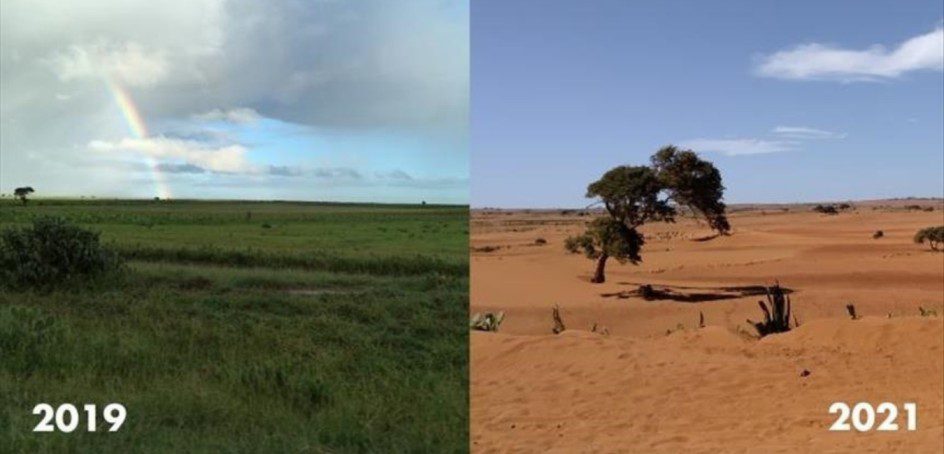Families at the brink of starvation in Madagascar


The southern region of Madagascar, off Africa’s east coast, is suffering from its worst drought in four decades, with the World Food Program (WFP) recently warning that 1.14 million people are food insecure and 400,000 are on the verge of starvation. People are already eating raw cactus, wild foliage, and locusts as a last resort food supply.
The World Food Programme (WFP), which is assisting with food distribution on the ground, describes scenes of unspeakable suffering, with families bartering everything they own—including cooking pots and spoons—for the meagre tomatoes, scrawny chickens, and few bags of rice still available in the markets.
“This is not due to war or conflict; it is due to climate change”
David Beasley, Executive Director of the World Food Programme
WFP has warned that by October, the number of people facing phase 5 catastrophic food insecurity could have doubled. And the culpable party is right in front of the group’s eyes. “This is not due to war or conflict; it is due to climate change,” says David Beasley, Executive Director of the World Food Programme.
The WFP’s Chief David Beasley compared hunger and malnutrition to a ‘horror film’, saying it is “enough to bring even the most hardened humanitarian to tears”.
“I have been working in several countries in this continent – in the Central African Republic, in DRC, in Congo, in Sudan – I have never seen kids left with skin and bones,” the WFP’s Deputy Country Director in Madagascar, Arduino Mangoni told RTÉ News.
“I have never seen kids left with skin and bones”
the WFP’s Deputy Country Director in Madagascar, Arduino Mangoni
There is currently no system tracking the number who have died of starvation. However, AFP has tallied at least 340 deaths from local authority figures in recent months.
For the past five years, the southern section of Madagascar, a beautiful, mostly tropical island known for its biodiversity, has seen below-average rainfall. The majority of people in the south rely on rain-fed, small-scale agriculture to survive, but rivers and irrigation dams have dried up due to the drought.
“This famine in Madagascar, the heatwave in America, the floods in Germany, this is an indicator that climate change needs to be taken seriously,” says Landry Ninteretse, the Africa director for climate advocacy organization 350.org. He further added, “In the same way the world reacted to the pandemic and were able to get vaccines in less than a year—If the world would have reacted in the same way when we started sending the first warning signals of climate change, the situation would be much better than what it is now.”
Fears about Madagascar’s future, as well as what this means for the future of our planet, continue to grow.
Written by Prithiva Gupta
